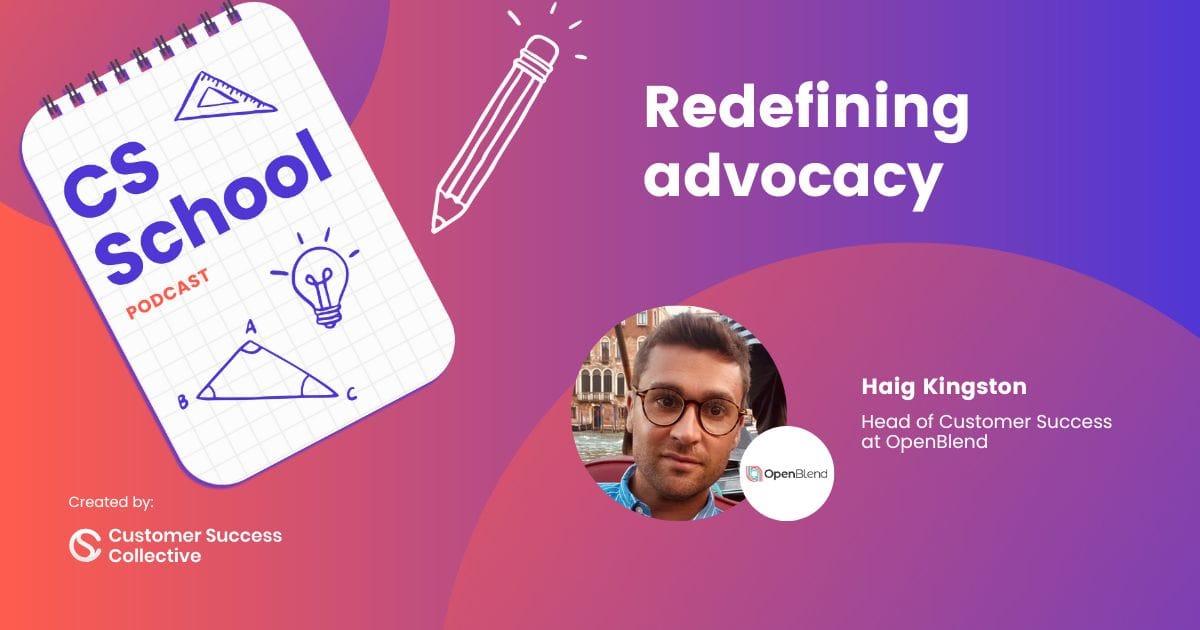Steering through the tricky terrain of customer advocacy is all about mixing a bit of gut feeling with some serious number-crunching.
I've been around the block a few times as a customer success leader, running into all sorts of challenges and wins along the way. These journeys really honed my ability to balance a personal touch with a focus on the stats, and I'm looking forward to sharing these insights with you.
Picture yourself as the conductor of an orchestra, where each musician's contribution is essential to the overall performance. In the grand concert hall of customer advocacy, every interaction plays a crucial role, akin to the individual notes that come together to form a harmonious melody.
The metrics we use are not just numbers on a page; they're the musical score that guides the orchestra, ensuring that each note resonates with precision and grace to create a captivating experience for our audience—our valued customers.

Customer satisfaction score (CSAT): The resonance of emotions
What is customer satisfaction score?
Customer satisfaction scores (CSAT) offer a direct insight into customer sentiments by capturing immediate reactions—it's an accurate gauge of their contentment. Enhancing these metrics requires deep empathy to ensure each dialogue resonates perfectly with our clientele. CSAT is pivotal as it often reflects the first impression customers share post-interaction.
How to elevate customer satisfaction score
To enhance customer satisfaction, it's crucial to engage empathically by actively listening and understanding the emotions behind customer concerns, not just the words they express.
Replying considerately is equally important, as each interaction should be treated as a unique experience, with responses that reflect genuine appreciation and provide thoughtful solutions beyond standard replies. After resolving an issue, reconnecting intentionally to verify customer contentment is vital, which could involve a follow-up message or a feedback survey.
Elevating our customer satisfaction score necessitates tuning into our customers' needs and preferences through customizing support to meet their specific requirements and history with us, enabling customers by providing self-service options and comprehensive knowledge resources for faster resolution, and implementing feedback to continually improve based on customer insights, ensuring they know their feedback is both valued and acted upon.

Net promoter score (NPS): The pulse of expansion
What is NPS?
The net promoter score (NPS) serves as a compass for our brand's trajectory, signaling how willing customers are to become our champions. To safeguard and propel our NPS upwards, we need to transcend mere contentment, crafting experiences that turn our customers into enthusiastic advocates. NPS isn't just a number—it's a predictor of loyalty and a blueprint for relational growth.
How to boost your net promoter score
To boost our score, we must be the epitome of service excellence, consistently delivering high-quality service to build a foundation of trust, and ensuring customers see us as a reliable brand. Additionally, orchestrating extraordinary encounters that occasionally surpass expectations can create memorable experiences, sparking positive word-of-mouth and naturally expanding our referrals.
Lastly, cultivating our customer collective by involving them in our story through social media and special events fosters a sense of community, encouraging story-sharing and strengthening our collective bonds.
To boost your net promoter score, ensure a positive customer experience from start to finish and respond to feedback promptly, making customers feel heard. Invest in your team's training to improve customer satisfaction. Convert unhappy customers into promoters by addressing their issues.
Encourage positive word-of-mouth and monitor NPS regularly, adjusting strategies as needed. Communicate openly with customers, personalize service, and show the value of their feedback. Compare your NPS with competitors to set targets. A strong NPS reflects a customer base that loves your service and is eager to return, driving your brand’s growth.

First contact resolution (FCR): The rhythm of productivity
What is first contact resolution?
First contact resolution is a pivotal metric that reflects our ability to address customer inquiries effectively at the first interaction. A high FCR rate signifies smooth and competent customer service, enhancing trust and solidifying our standing for outstanding service.
To improve FCR, it's essential to optimize support pathways by simplifying access to assistance through a cohesive platform or clear guidance on the best channel for specific issues.
Investing in team development is also crucial, as well-trained staff equipped with extensive product knowledge, communication skills, and problem-solving techniques are instrumental in achieving a high FCR.
Furthermore, utilizing customer insights to proactively identify and address potential issues, by analyzing past interactions for patterns or employing AI for real-time solution suggestions, can significantly boost FCR efficiency. Concentrate on these metrics and improvement methods to forge an approach to customer advocacy that is both adept and considerate, marrying hard data with human insight to offer an unmatched customer journey.
Enhancing FCR is crucial for improving customer satisfaction and operational efficiency. It's a key indicator of our efficiency in resolving customer inquiries at the initial point of contact.
A high FCR rate demonstrates our commitment to providing smooth and effective customer service, which in turn builds trust and upholds our reputation for excellent service.
To enhance FCR, it's vital to optimize support pathways, ensuring customers have easy access to help through integrated channels or clear directions for their specific concerns. Investing in team development is also essential; a well-trained team with deep product knowledge, strong communication skills, and adept problem-solving abilities is fundamental to achieving a high FCR.
Additionally, utilizing customer insights to proactively address potential issues, whether through analyzing previous interactions for recurring problems or using AI to offer real-time solutions, can greatly improve FCR outcomes.
Creating a customer-focused opus
As CS leaders, we dive deep into the numbers in order to fine-tune how we measure success, making sure our customers are happy and that we stay on track with our plans. It's not just counting stats; it's about looking closely at everything, tweaking as we go along, and getting creative to make every customer feel like their experience is top-notch.
By combining a real knack for understanding what customers want with some solid analysis, we turn the whole customer journey into something special that truly speaks to what they're looking for and feeling. We're dedicated to nailing both sides of the coin to not just reach but smash those customer expectations, building a strong bond that's both heartfelt and tangible.
The stories behind the numbers
Metrics are like maps that help us understand our customers' journeys, but they're not the endgame. They're super important for getting a grip on how we interact with customers. At the core of being customer advocates, though, it's all about the stories we craft from these numbers.
When we dig into these metrics, we start to see customer highs and lows - every number tells us about a problem solved, a need met, or an expectation that's been beaten. Our job is to really listen, get where they're coming from, and make moves to ensure their story ends on a high note.
Talking about proactive solutions, we have our eyes on the horizon, always trying to tackle issues for our customers before they even know there is something up. This way, they get smooth sailing all the way, and it proves we're all about looking ahead to keep things running smoothly.
Learning all the time is key for us. We use the feedback hidden in the metrics as a tool to sharpen our game and make the customer's experience better and better.
At the heart of it, it's about building relationships. We’re all about strong ties with our customers, making every chat part of an ongoing conversation and long-term connection. It's these bonds that build trust and loyalty and keep customers sticking with us.
A tale of transformation
A customer was facing a recurring billing issue that was causing them significant stress. The Customer Success Manager who handled the case did not only resolve the issue but also delved into the root cause. After collaborating with the product team, they identified a systemic issue and implemented a fix that improved the billing process for all customers.
This is the kind of transformative work they do every day. Their role as Customer Success Managers extends beyond mere troubleshooting—they're the architects crafting the passageway to enhance experiences for each customer.
While they tally their successes in metrics, it's truly the transformative impact they have on their customers' daily experiences that scales the summit of their achievements.



 Follow us on LinkedIn
Follow us on LinkedIn




